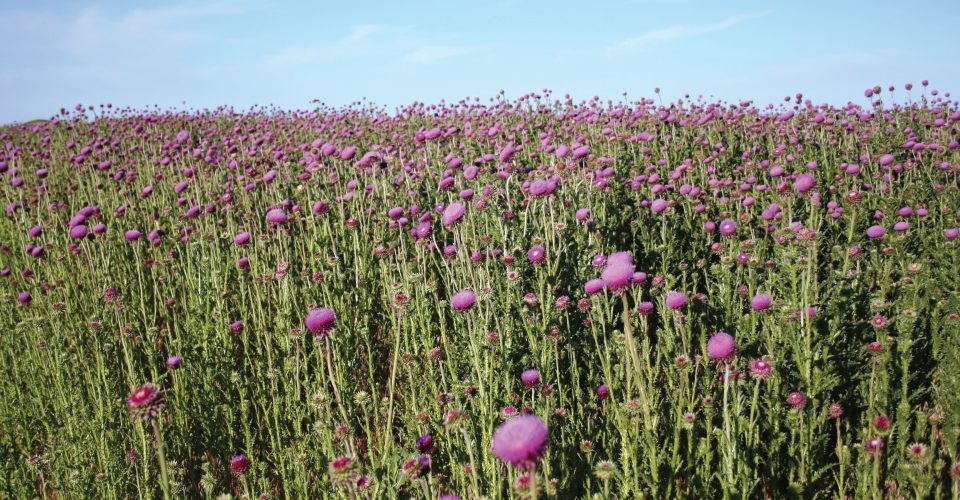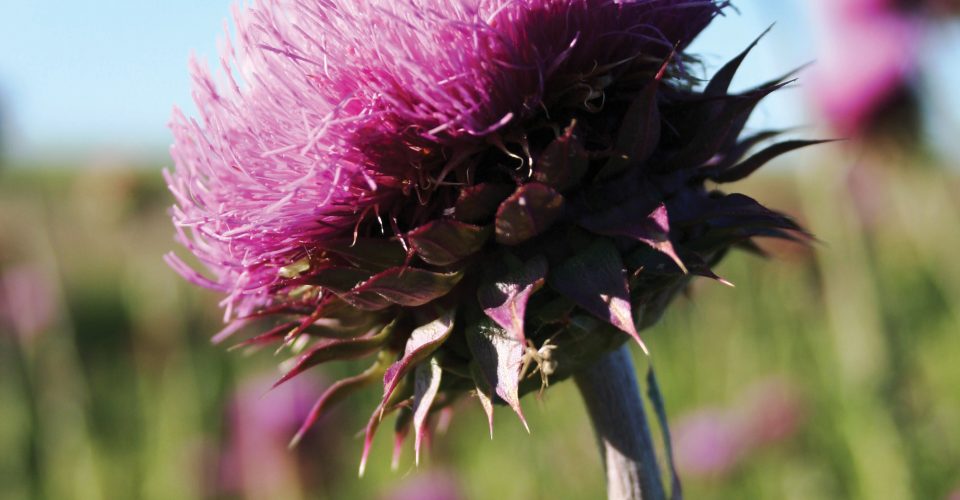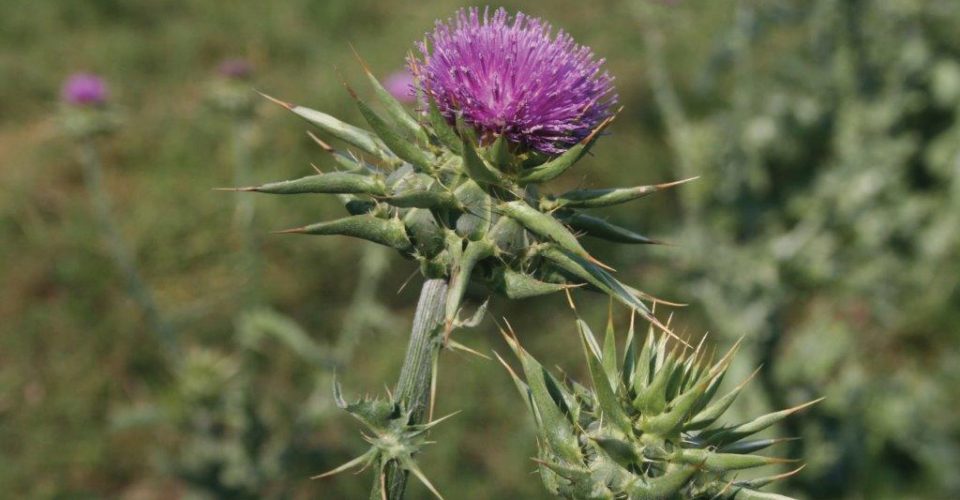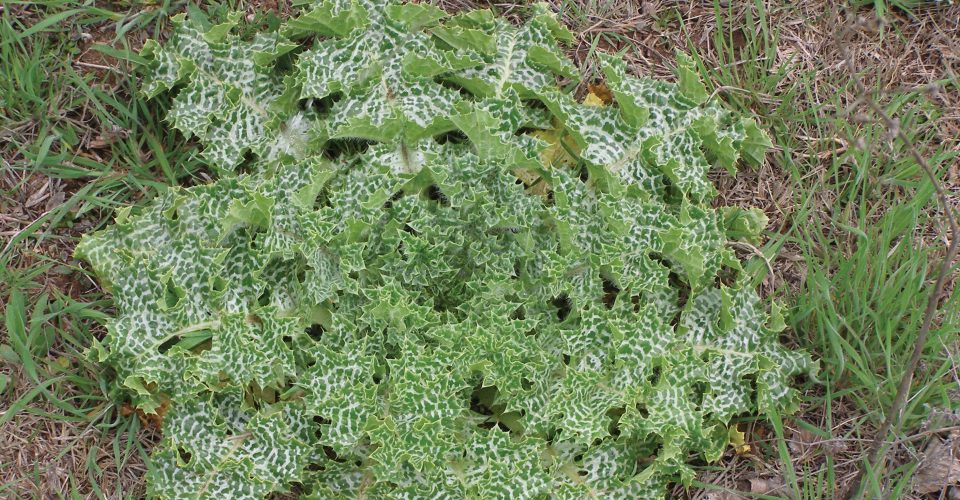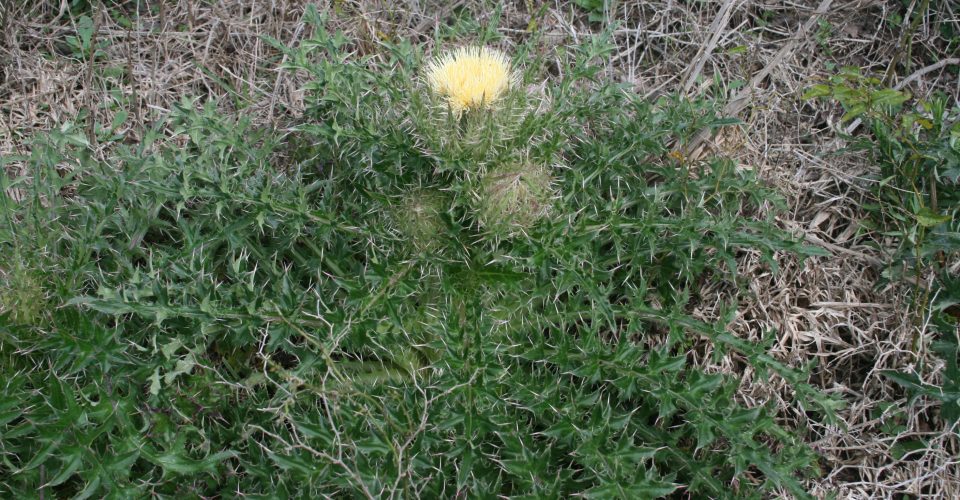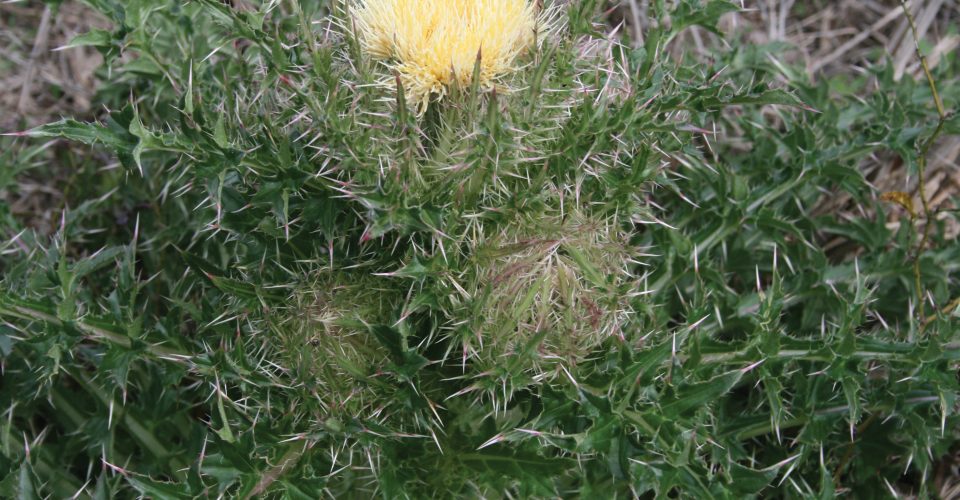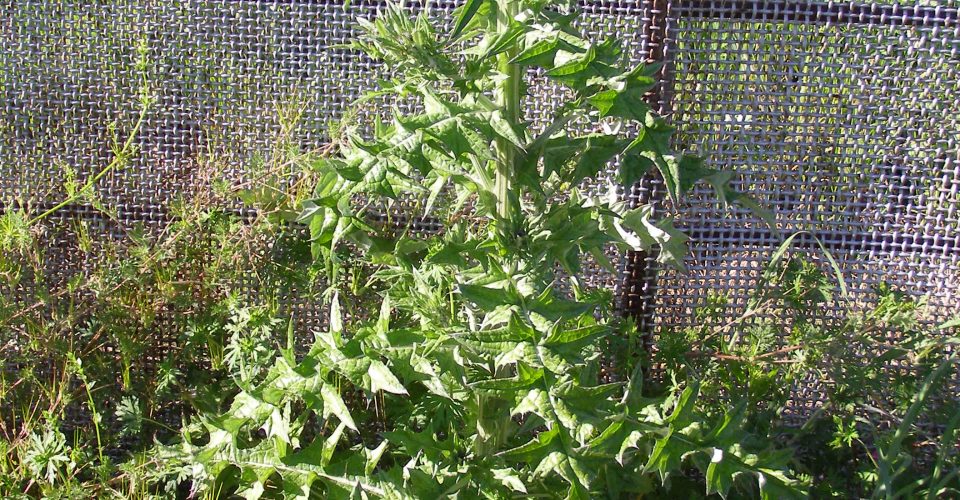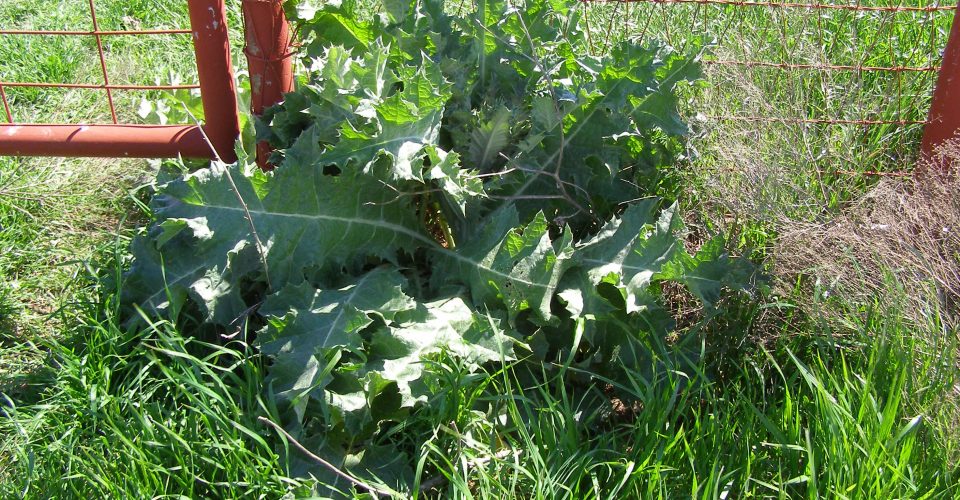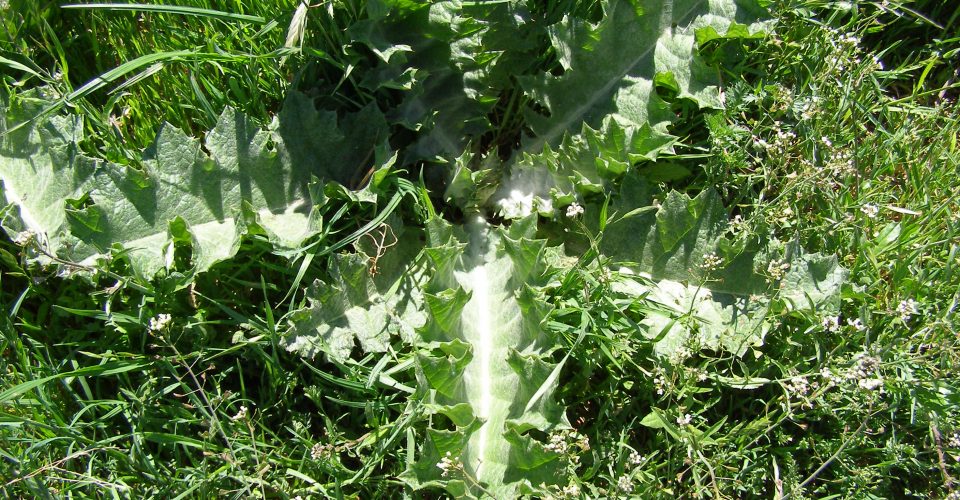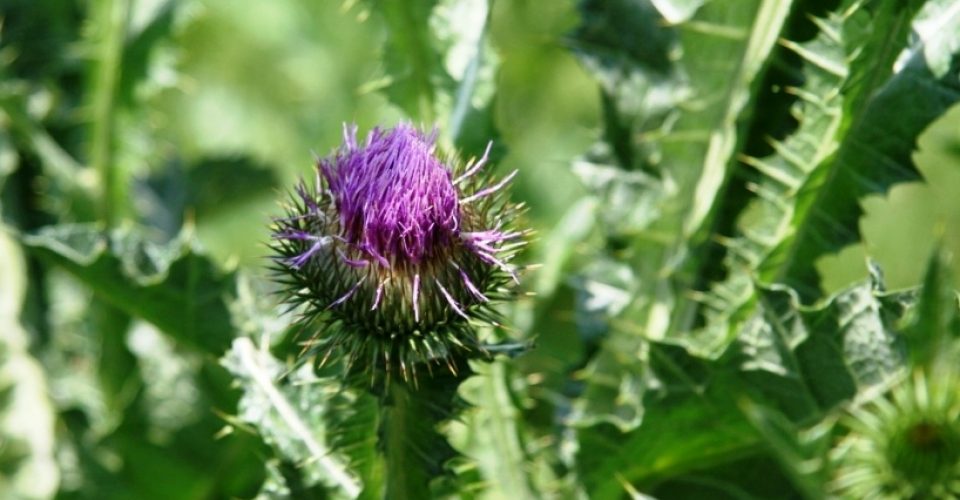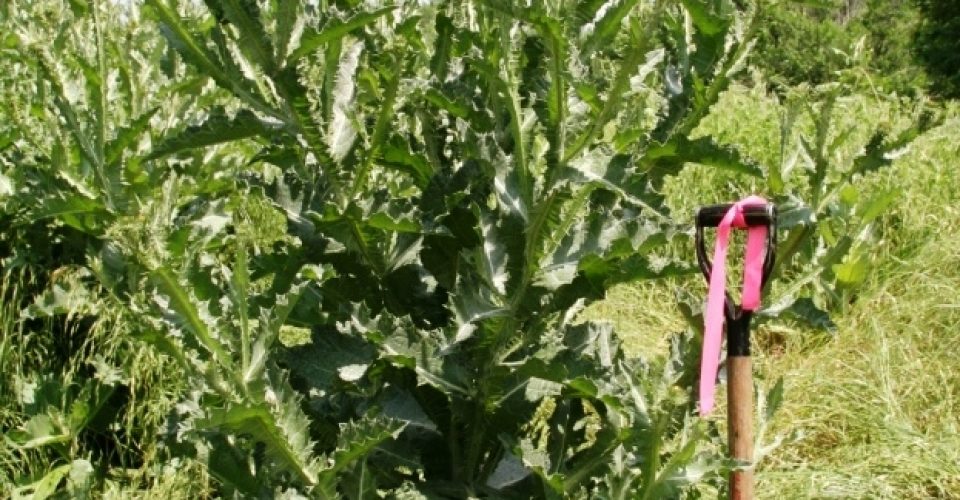Thistles Complex (Cirsium spp., Silybum spp., Onopordum spp. and Carduus spp.)
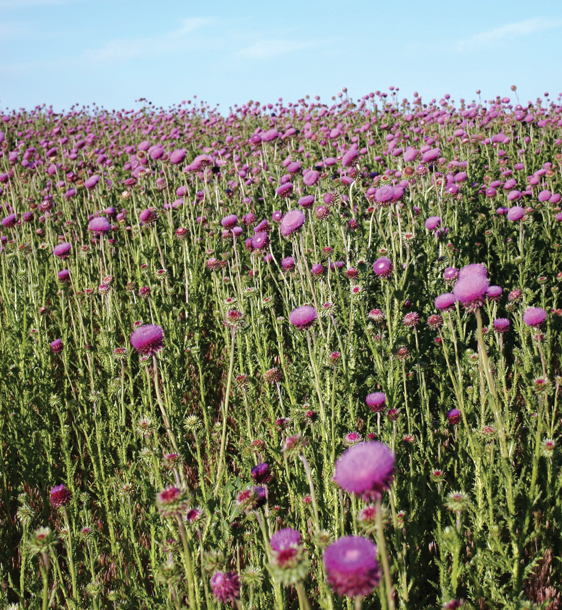
Thistles are a very aggressive, biennial, introduced forb that can be traced back to Europe and Asia.
Thistles form dense stands of spiny, well-branched plants with prickly leaves. Once mature, a plant can easily reach 5 to 7 feet in height.
- Easily recognizable, thistles form a large rosette the first year of growth that is usually at least 1 foot tall, 2 feet across and rarely makes a flower and seed. They will wait until their second year to produce purple or yellow flowers, along with thousands of seeds per plant.
- Most common types in roadsides and pastures are the bull thistle, musk thistle, blessed milk thistle, plumeless thistle and Scotch thistle. However, there are many more species that cause problems in landscapes.
- Most common following a wet winter and can be easily noticed in the spring in pastures because they are a gray plant with white hairs that stand out from other plants.
Thistles have very little use by domestic livestock, if any, and can dominate landscapes quickly if not managed in time. Certain types of finches use thistle seeds for food, but because of the aggressive nature of these plants, it is not recommended that they be allowed to mature enough to produce seed.
Thistles need to be controlled early in the spring with the proper herbicide to get good control.
Editor’s note: Kent Ferguson, retired rangeland management specialist from USDA Natural Resources Conservation Service (NRCS), is providing us with plant identification photo stories to help ranchers identify those forbs, forages and species growing in the pastures. Additional photos provided by USDA NRCS.
Thistles Complex is excerpted from the January 2016 issue of The Cattleman magazine.

